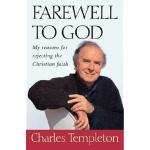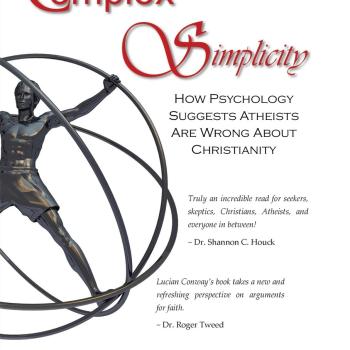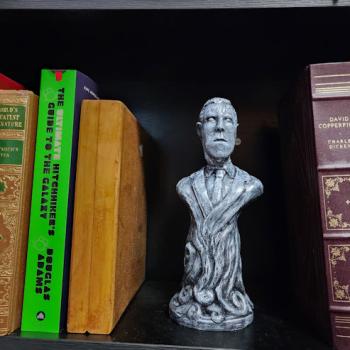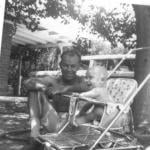Religious Conversion: The Standard Model
This column has covered the famous and influential model of religious conversion constructed by researcher Lewis Rambo a number of times. By way of a brief recap, Rambo’s model states that a potential convert undergoes some kind of stressor – minor or traumatic – but the stressor persists until the person experiencing the stress enters what Rambo calls the “quest” phase. During questing, the person is looking for solutions outside of his or her immediate life situation. As the person becomes open to new ideas or ways of life, he or she encounters a religious person or group, and begins to form some kind of relationship.
The potential convert begins to interact with the religious ideas and participate in religious events until he or she finally commits to the religion.
Quantity over Quality
Rambo’s model was published in 1993, but thirty years on, it remains the standard in the field of conversion research. However, Rambo formed his model from looking at conversion accounts to identify common features. In 2003 two researchers attempted to replicate Rambo’s results by way of what is called “quantitative research.” Unlike Rambo’s technique, which looked at conversion accounts until certain trends or features appeared to emerge, these two researchers were interested in creating a standardized questionnaire to gather specific data from 110 individual converts, and then compare those data to Rambo’s model to see if Rambo’s trends were consistent.
While most of the data were gathered using a questionnaire with scaled questions (on a scale of one to nine, how much did the love and acceptance of Christians contribute to your conversion?), the test also allowed individuals to give a narrative description of their conversion.
Once the dust had settled and all the numbers were crunched, the researchers found six very interesting features of conversion.
-
Redemptive Love
The first, and most significant of the factors the researchers discovered related to a sense of purpose injected into the person’s life during and following the conversion process. The person felt a sense of direct connection to God, and consequently, to other people. More interestingly still, the person felt a sense of improved functioning within the world as a result of conversion. Because of these new-found connections, the participants found themselves more involved in the community.
Most interestingly, though, the person felt a sense of release from something which had been holding them back prior to the conversion. As an interesting aside, people reported feeling a similar sense of release upon deconversion in the work of John Marriott. However, in contrast to Marriott’s findings, this study found that the features of Redemptive Love were experienced to much higher degrees in Christian converts than in atheists and agnostics.
-
Zealous Dedication
The second most common feature identified by the researchers was a deep sense of commitment the convert felt to their newfound religion and the associated community. This was especially prominent in younger converts.
One manifestation of this commitment was a deep desire to share their new beliefs with others, and to convert them as well. This indicates that the most zealous of evangelists happen to be the newly evangelized.
But this zeal was not without its consequences. Frequently, the researchers found, the person’s sudden change of lifestyle resulted in strained or severed relationships with friends and family who knew them prior to their conversion. Fortunately for the convert, their religion came with an inbuilt community to replace whatever relationships were lost in the process.
Worth mentioning is that a similar fallout is common in deconversion, but without the replacement community, causing the isolating emotional effects of deconversion to be more devastating than those of conversion.
To a degree, this zeal appeared to be driven by the feelings of relief and release discussed above – most notably, the release from sin.
Interestingly, converts to conservative or evangelical Protestantism were higher than Catholics, liberal/mainline Protestants, and non-Christians in their experience of Zealous Dedication. This may be partially explained by the fact that the concept of “sin” is discouraged or denounced by the latter, but features prominently in the former.
-
Dysphoric Need
The third item discovered by the researchers was low self-esteem or acceptance that the person felt, which promised to be filled by the new connections the religious community offered.
The data for this study were collected in two arenas. The first was at a conference on conversion studies, and the second was by way of a mail-in survey. An interesting factor related to “Dysphoric Need” was that it was found to be much higher for those people who responded by mail-in survey than those who participated at the conference.
-
Openness to Uncertainty
The fourth item in this study is perhaps the most surprising, given the frequent findings of deconversion research. Deconversion studies often reflect a certain inflexibility, anti-intellectualism, and discouragement of asking questions within the religious community. But in this study on conversion, Converts reported feeling an openness to questioning, exploration, doubt, and religious change in this stage.
Some of this surprise, however, is reduced by the fact that converts to non-Christian religions rated higher in Openness to Uncertainty than did Christian converts, and also, Openness to Uncertainty was found more prominently among people with higher degrees of education.
-
Extrinsic Crisis
This fifth factor reflected the fact that a not insignificant number of converts were inspired to change due to unusual, extreme, or life-threatening events which produced stress from outside of the person’s ordinary circumstances. This might include something like job-loss, the introduction of a threatening medical condition, or any other shakeup in the ordinary life of the participant which called for the person to seek outside his or her ordinary life to find solutions. The researchers found this especially with older converts.
Much like the Dysphoric Need, West Coast converts felt Extrinsic Crisis much more heavily than those in the Bible Belt.
-
Experiential Learning
The sixth and final factor identified by the researchers included preparation for conversion in the form of participating in religious events, education, or ceremonies which incorporated religious ideas and practices into the person’s life. That this factor was so low on the list is surprising, since participation in the religion was a major phase in Rambo’s original model.
Religious Environments
An interesting finding from this study was that those people who came from areas of the country which were low in religious participation (the West Coast), were motivated much more highly by Dysphoric Need and Extrinsic Crisis than were those in the Bible Belt (Oklahoma and Tennessee). This might have something to do with the saturation of the Bible Belt with religious ethos versus the sparsity of religious availability on the West Coast, but it could equally be due to the fact that the type of Christianity most available on the West Coast has to do with personal validation versus the focus on sin and salvation in the Bible Belt.
A Return to Rambo
This study actually corresponded comfortably with the model suggested by Rambo in 1993. Specifically, factor analysis gave researchers high confidence that their questionnaire accurately captured the conversion experience. The five factors of the conversion experience most related to Rambo’s model of conversion included:
- Redemptive Love: something Rambo linked to the “consequence” phase (the final phase in which Rambo inspected the fallout following the conversion)
- Zealous Dedication: which mapped well onto Rambo’s “commitment” phase
- Dysphoric Need: part of Rambo’s “crisis” phase
- Extrinsic Crisis: an alternative form of Rambo’s “crisis” phase
- Openness to Uncertainty: was a factor that mapped onto all of Rambo’s phases
- Experiential Learning: mapped onto Rambo’s “interaction” phase
The researchers were very thorough in testing Rambo’s model, including some qualitative measures against which to check the quantitative measures. This included the essay, but also included sharing the results with the participants and with religious authorities in order to check the results against their real-world experiences. The qualitative checks confirmed the accuracy of the quantitative analyses.
The Study Referenced by this article is Kahn, P. J., & Greene, A. L. (2003). “Seeing conversion whole”: Testing a model of religious conversion. Pastoral Psychology, 52(3), 233–258. https://doi.org/10.1023/b:pasp.0000010025.25082.25



















